#influence of American cinema
Explore tagged Tumblr posts
Text
Indians at the Academy Awards: From Satyajit Ray to Deepika Padukone
Come Sunday, Indian cinema is launching one of its biggest offensives ever at the Academy Awards. Naatu Naatu from S.S. Rajamouli’s RRR is up for Best Original Song; it won the Golden Globe, to frenzied jubilation everywhere, two months ago. Meanwhile, two documentaries — Shaunak Sen’s feature-length All That Breathes and Kartiki Gonsalves’s 41-minute The Elephant Whisperers— are in with a shout…
View On WordPress
#academy awards 2023#Bhanu Athaiya#Deepika Padukone at Oscars#Deepika Padukone’s appearance at the Dolby Theatre#India at the Academy Awards#Indians at Oscars#influence of American cinema#Naatu Naatu’s success#oscars 2023#RRR#RRR Oscars#satyajit ray
0 notes
Text
I think filming everything with your camera is inherent to american culture... How often do you see IG reels that are videos of people that seem unaware of being filmed that aren't USAn? Wonder what led to this reflex... if it's an older phenomenon has it influenced American cinema? Americans seem to used to being filmed that I rarely come across a video where they ask why they're getting their video taken
14 notes
·
View notes
Text










The Texas Chain Saw Massacre (1974)
"Things happen here about... they don't tell about. I see things. You see, they say it's just an old man talking. You laugh at an old man. There's them that laughs and knows better."
#the texas chain saw massacre#horror imagery#tobe hooper#1974#american cinema#kim henkel#marilyn burns#allen danziger#paul a. partain#william vail#teri mcminn#edwin neal#jim siedow#gunnar hansen#john dugan#john henry faulk#robert courtin#wayne bell#joe bill hogan#video nasty#horror film#one of the essential texts of cinema‚ and not just horror cinema. it's difficult to over state just what an impact this had both on the#genre (the use of power tools as weapons; the way Leatherface influenced and continues to influence the characteristics of the slasher#villain; the way Hooper sows in a feeling of dread almost subliminally with the snatches of horrific radio reports that play over the#opening etc etc etc) and on indie cinema in a larger sense (Hooper shot near constantly with his cast largely on site throughout and#demanded 7 day work weeks to cut down on the rental cost of the equipment; he also proved that 'extreme' content could translate into#massive commercial success‚ leading to distributors taking greater risks on genre fare throughout the decade that followed). this has all#been discussed ad nauseum by actual academics and i haven't much to add except that revisiting nearly 20 yrs since the 1st and last time i#saw this (!) i find it still an incredibly strong work from an immensely talented (and much missed) auteur. it may not be to everyone's#tastes but it's TCM baby‚ it's part of the zeitgeist and there's just no getting around that. kino!
15 notes
·
View notes
Text

John Cassavetes and Gena Rowlands on the set of GLORIA, 1980.
#gena rowlands#rest in peace#greatest actress#john cassavetes#cinéma vérité#independent cinema#american independent cinema#pioeers#gloria#a woman under the influence#opening night#minnie and moskowitz#love streams#night on earth#the notebook
12 notes
·
View notes
Text

#movie#film#motion picture#cinema#American movie#American film#American motion picture#American cinema#John Cassavetes#Gena Rowlands#Peter Falk#independent film#independent movie#contemporary woman#mental illness#movie poster#film poster#movie trailer#film trailer#A Woman Under the Influence
6 notes
·
View notes
Text
If you haven't heard the news, it recently came out that Disney pulled a trans-empowering episode of the show Moon Girl and Devil Dinosaur. In the time since the news came to light, I've seen a few people say Disney can't accurately be accused of censoring queer content, because "censorship is only done by the government."
Let's talk about the Hays Code a bit.
The Hays Code was a major form of American media censorship. The Hays Code was also not a government policy! While former American politicians were involved in the creation of the Code, they were not acting in capacity as United States government officials by the time the Code was enacted.
The Hays Code was enforced within the Hollywood studio system, never by the United States government. It was successful because the same studios that owned the films also owned the cinemas, which allowed them to enforce which films were shown. (This is called "vertical integration.") The Hays Code ultimately fell apart when anti-trust legislation separated cinema ownership from the studios, meaning filmmakers did not have to adhere to studio censorship in order to show their films to the public.
(If you're interested in reading more about the Hays Code, I recommend the book Pre-Code Hollywood: Sex, Immorality, and Insurrection in American Cinema, 1930-1934, written by Thomas Doherty. It'll get you started.)
Corporate censorship is very much a form of censorship. Companies such as Disney have immense political and social power. Disney owns obscene amounts of intellectual property. It employs a couple hundred thousand people globally according to Statista. Disney is a political entity, especially in regions it operates theme parks (such as Florida, where I live).
If the Disney company decides something is forbidden, it has a hell of a lot of influence. Disney absolutely has the power to enact censorship. I wrote a five thousand word essay about how Disney nearly killed the Nimona movie, and that's just one recent example.
Corporate censorship is absolutely censorship, and it's important to call it what it is.
996 notes
·
View notes
Text

Edward Hopper, Conference at Night, 1949. Oil on canvas.
Numerous critics and exhibitions have documented the influence of stage sets and popular American cinema upon Hopper’s depictions of the urban scene, often citing this image as a prime example. Film historian Peter Wollen identified Conference at Night as one of many Hopper paintings that look like scenes in movies that one has come in on in mid-screening. The viewer feels that the vignette must have a before and after; it feels like a momentary flash in an on-going mystery. Writer and Hopper’s close friend Brian O’Doherty noted that Conference directly referenced the hallmarks of the era’s popular gangster movies, or film noir, in its lighting, bleak urban setting and hard-faced characters.
This painting is classic Hopper in its theme of voyeuristic glimpses of the city at night and its masterful exposition of such favored compositional devices as an open window, a near-empty room in a utilitarian structure, strongly-directed light from an unseen source, and anonymous figures engaged in some undefined yet intense social exchange to create an arresting psychological drama. Conference at Night furnishes one of the four superb examples of work in the Wichita Art Collection by an artist who is one of the greats of 20th century painting.
Text & photo: Wichita Art Museum
#vintage New York#1940s#Edward Hopper#painting#oil painting#realsim#NY art#late meeting#Conference at Night#vintage NYC#artwork
151 notes
·
View notes
Text
Is BL Being Overly Influenced by Modern Western Romance Tropes?
Short answer: No. anyways, in the following essay I will explain that James Cameron is a weeb...
(okay fine~~ lets actually do this)
TLDR: discussing what media globalization is, how fandom can distill it down to only American/European cinema, showcasing how a lot of current BL is influenced by countries within it's own proximity and NOT "the west" but each other, also James Cameron is still a weeb
I had seen a post that basically proposited that BL was being influenced by modern western romance tropes and had used things like omegaverse and mafia settings as an example. I found this, in a word, fucking annoying (oh, two words I guess) because it's micro-xenophobic to me.
It positions western - and really what we mean by this is American/European countries, we're not talking about South American countries are we? - cinema as the central breadbasket of all cinema in and of itself. Inherently, all following cinema must be in some way, shape, or form, influenced by American/European standards, and as such America/European countries are directly responsible for cinema everywhere else, and these places - namely non-white countries - do not influence each other, nor have their own histories in regards to storytelling or cinema and do not, in turn, also influence American/European film making either.
Now like, do I think all of that~~ is intentionally malicious thinking on behalf of folks in fandom? No, so chill out.
I do, however, think a lot of it is birthed from simple ignorance and growing up in an environment where ~The West~ is propagated to be central, individual, and exceptional as opposed to the monolith of "Asia" - by which we mean China, Korea, Japan don't we? How often in discussions of Asian countries is Iran, India, or Saudi Arabia brought up even tho they are all Asian countries? - or the monolith that is South America - in which some folks might believe regions like the Caribbean and/or Central America belong to, but nope there both North America.
Anyway, what we're talking about here is the concept of "media globalization":
"The production, distribution, and consumption of media products on a global scale, facilitating the exchange and diffusion of ideas cross-culturally." (source)
"The media industry is, in many ways, perfect for globalization, or the spread of global trade without regard for traditional political borders. [...] the low marginal costs of media mean that reaching a wider market creates much larger profit margins for media companies. [...] Media is largely a cultural product, and the transfer of such a product is likely to have an influence on the recipient’s culture." (source)
Typically when I see fandom discussing what falls under MG the topic is usually focused on how "the west" is influencing Thai/Korean/Chinese/Japanese media.
Enter, Pit Babe.
Surely Pit Babe was influenced by Supernatural right? Omegaverse is huge in the west - love it, hate it, meh it - it originated in the west - specifically via Supernatural after all.
Nah.
Omegaverse has been popular in Japan and China for almost a decade, if not longer. The earliest omegaverse manga I can think of is Pendulum: Juujin Omegaverse by Hana Hasumi which was released in 2015, almost a decade ago.
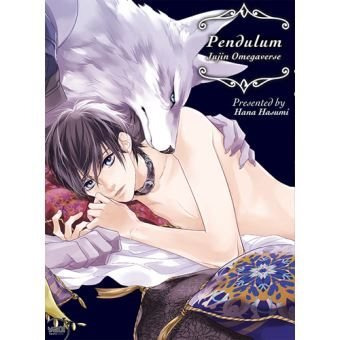
(what if you added furries into omegaverse? WHAT IF?? - Japan)
There's countless popular omegaverse manga too, and the dynamics only moderately resemble the ones we're familiar with in the west. Juujin is part omegaverse and part furry/beastmen - the alphas are all beastmen the omegas are humans - while something like Ookami-kun Is Not Scary only slightly resembles omegaverse dynamics as a hybrid series - beastmen are really popular in Japan in part b/c of historical mythology (you see the combination of romantic Beastmen and Japanese culture & folklore in Mamoru Hosoda's work The Boy and the Beast and Wolf Children).
Megumi & Tsugumi (2018) is so popular they're an official English edition published by VIZ's imprint SuBlime and that's a straight up omegaverse story.

(look at the omega symbol on the cover loud and proud baby)
So if Pit Babe was influenced by anything, it certainly wasn't "the west" it was Japan, Korea and China. Because those countries have a thriving omegaverse sub-genre going and have had such for 10 plus years now. Supernatural is popular in Japan, yes, and that may be where Japan and Japanese fans originally found omegaverse as a fictional sub-genre.
HOWEVER
Japanese fans took the sub-genre, bent it, played with it, and evolved it into their own thing. As such, other countries in their proximity, like Thailand, China, and Korea who read BL and GL manga, found it and were like "hey, we wanna play too!"

(is that an omegaverse yuri novel I spy?? yes, yes it is)
When I watched the Red Peafowl trailer, it had more in common with Kinnporsche, History: Trapped, along with films and shows like: Jet Li's The Enforcer, and Fist of Legend, Donnie Yen's Flash Point, Raging Fire, and Kung Fu Jungle, Han Dong-wook's The Worst of Evil, Kim Jin-Min's My Name, Lee Chung-hyeon's The Ballerina, Baik's Believer & Believer 2, Yoshie Kaoruhara's KeixYaku, popular Don Lee films The Gangster, the Cop and the Devil and Unstoppable alongside BL manga like Honto Yajuu and Bi No Isu (probably one of the most well known yazuka manga to date).
youtube
youtube
youtube
Like, we're seeing a rise in mafia based BLs and people think that's because of "western influence" and not the absolute insane success of kinnporsche??? Especially in countries like China, Korea, Taiwan, Philippines and other Asian countries???
Mafia films and gang shows aren't even that popular here in America/Europe; don't get me wrong, they still get made and exist, but the last full length film was The Irishman which did not make it's budget back, and while Power is still on-going it's not a smash hit either. The heyday of Breaking Bad, The Sopranos, The Wire, Goodfellas, and Scarface are long gone. And if you've watched any those shows or films they have very little in common with Kei x Yaku, Kinnporsche, or Red Peafowl in tone, or style.
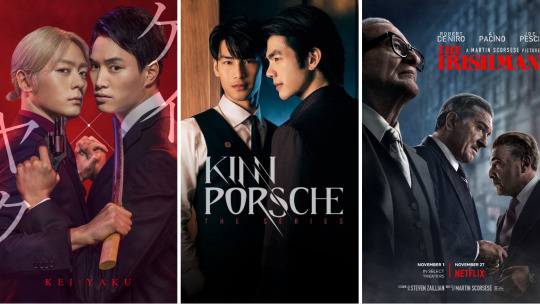
(who knew martin just wanted to make his al pacino/robert de niro fanfic come to life all these years?)
Another example, The Sign, which is clearly taking inspiration from Chinese costume dramas: Ashes of Love, Fairy and Devil, White Snake (and it's many adaptions), Guardian, & Ying Yang Master Dream of Eternity. Alongside Hong Kong and Korean cop and romance shows like Tale of the Nine-Tailed, Hotel Del Luna, Director Who Buys Me Dinner, First Love, Again, and previously mentioned cop dramas.
youtube
youtube
youtube
Like, I know y'all don't think Twins is influenced by, what, American sports classic Angels in the Outfield?? Gridiron Gang?? Rocky?? Nah that shit is inspired by the popularity of sports manga like Haikyuu!!, Slam Dunk, Prince of Tennis (which even has a Chinese drama adaption), and the like. And also probably History 2, & Not Me but I'm like 87% sure Twins is just Haikyuu fanfic.
So like, does this mean that there's NO history in which American and European cinema influenced these countries? What, no, obviously that's not true, American/European totally have had media influence on countries like Korea, Japan, etc.
Astro Boy by Osamu Tezuka considered "the father of manga" was inspired by Walt Disney's work on Bambi. Another more recent and prominent example is director Yeon Sang-ho and his film Train to Busan.
"And it was Snyder’s movie [Dawn of the Dead, 2004], not the 1978 original, that filmmaker Yeon Sang-ho recalled as his first encounter with the undead. “That was when I started my interest in zombies,” Yeon said, in an email interview through a translator from South Korea. Even today, he added, “it’s the most memorable and intense zombie movie I’ve ever seen.”" (source)
HOWEVER, the global influence doesn't stop there. It's not a one-way street. Yeon Sang-Ho was inspired by Zack Synder's Dawn of the Dead, a remake of George Romero's own work, but Yeon Sang-Ho's work has inspired countless Korean film makers to make their own zombie media; following Train to Busan there's been: Kingdom (2019 - current), All of Us Are Dead (2022), Zombie Detective (2020), Zombieverse (2023), Alive (2020), Rampant (2018).
And hey, wouldn't you know it now we're starting to see more zombie media coming out of places like Japan (Zom 100 the manga, movie, and anime) and High School of the Dead.
Do you know what Domundi's series Zombivor (2023, pilot trailer only) reminds me of? It's NOT The Walking Dead (which is the only relevant zombie media America has created in the last decade) it's Korea's All of Us Are Dead (2022). Comparing the trailers, the settings, the tone, it's clear where Zombivor is pulling inspiration from: Korean zombie cinema. NOT American zombie cinema.
youtube
youtube
youtube
In fact a lot of Domundi's shows - Cutie Pie, Middleman's Love, Naughty Babe, Bed Friend - are all very clearly inspired by Korean filmmaking, specifically that of romantic kdramas from the 2016 - 2020 era. Not always in story, but rather in technique.
This is media globalization. It's not simply ~The West~ influencing non-American/European countries but countries who are often more close in terms of: proximity, culture, and trade are going to have more influence on each other.
It is far more likely that Aoftion (Naughty Babe, Cutie Pie, Zombivor) was influenced by watching Train to Busan, All of Us Are Dead, and other Korean zombie shows and films than a single episode of Walking Dead.
My point isn't that this goes one way only, but rather it is very literally a global thing. This includes American and European film makers being influenced by non-American and European cinema.
Martin Scorsese, Steven Spielberg, Darren Aronofsky, Christopher Nolan, the Wachowski sisters, George Lucas and James Cameron have all been influenced by Japanese film making, especially the works of Akira Kurosawa, Satoshi Kon, and Mamoru Oshii.
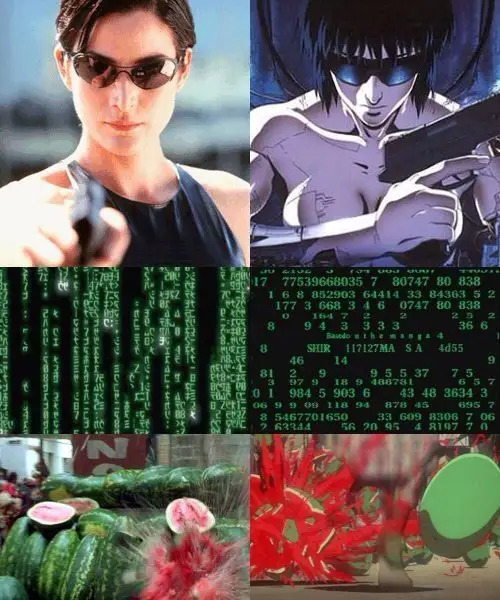
John Wick's entire gun-fu sub-genre is heavily influenced by classic Hong Kong action films, specifically John Woo films. Legend of Korra, The Boondocks, Voltron, Young Justice, My Adventures with Superman are all obviously inspired by Japanese anime but animated by a Korean animation studio (Studio Mir). Beyond that, the rise in adult animated dramas like Castlevania, Critical Role Vox Machina, and Invincible to name a few are very clearly taking inspiration from anime in terms of style. The weebs that were watching Adult Swim's Inuyasha, Bleach, and Dragon Ball Z have grown up and are now working in Hollywood.
Okay so like, what's the point of all this? What's the issue? Since American/European cinema does influence et all cinema does any of this really matter?
YES.
I take contention with this line of thinking because it centers "the west" and our supposed individual importance way to much. Declaring definitively that "BL is being influenced by western tropes" and then including tropes, narratives, and film making styles that aren't inherently western and actually have major roots in the cinema of various Asian countries, removes the existence of individual history these countries have which are rich, varied, and nuanced. It removes the "global" part of globalization by declaring "the globe" is really just America and Europe.
It distills these countries down to static places that only exist when American/European audiences discover them.
BL doesn't exist in a vacuum you can trace the development of Korean BL to the development of Korean het dramas almost to a T. You can also trace their development to the queer history of each country and how Thailand interacts culturally with China, Japan, Korea, etc and vice versa. It also ignores the history of these countries influencing American cinema as well. Don't mistake "the globe" for only your sphere of experience.
Anyway James Cameron is a damn weeb y'all have a good night.
Check out other posts in the series:
Film Making? In My BL? - The Sign ep01 Edition | Aspect Ratio in Love for Love's Sake | Cinematography in My BL - Our Skyy2 vs kinnporsche, 2gether vs semantic error, 1000 Stars vs The Sign | How The Sign Uses CGI | Is BL Being Overly Influenced by Modern Western Romance Tropes?
[like these posts? drop me a couple pennies on ko-fi]
#kinnporsche#pit babe the series#the sign the series#twins the series#red peafowl the series#domundi#gmmtv#chaos pikachu speaks#fucking a this was an entire essay#i should drop a ko-fi link cause good god damn#chaos pikachu metas#Youtube#pikachu's bl film series
307 notes
·
View notes
Text
You’ve got to remember, at the time, The Matrix hadn’t come out yet. So martial arts in American cinema was looked down upon. As a stunt person, you made your money falling or driving or doing a stair fall or fire burns. Anything but martial arts.
The Matrix comes out. I get a gig doubling Keanu after I turn it down a few times. I was one of the few six-foot-one guys out there that had a gymnastic, martial-arts background. Next thing you know, I’m doubling Keanu Reeves on The Matrix. And who’s doing The Matrix? Yuen Woo-ping himself, the greatest fight choreographer alive today and probably that’s ever been around, and now I’m learning with his team for the next 10 years. And through that time, I’m working with Jackie Chan, Donnie Yen, Jet Li, and being introduced to the best of the best in the industry. And you start talking to Jackie Chan a little bit, and who’s one of his biggest influences? Buster Keaton.
Chad Stahelski on what the John Wick movies owe to Buster Keaton
781 notes
·
View notes
Text
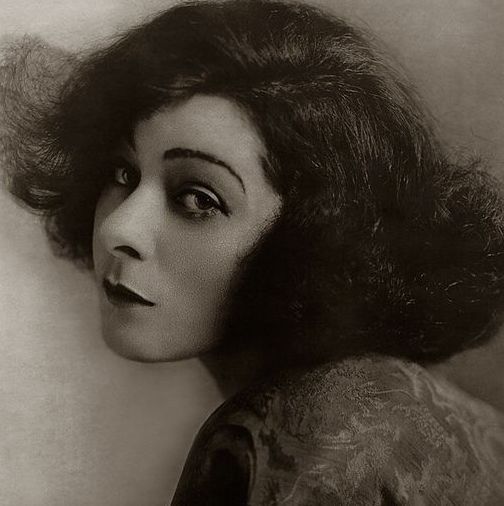
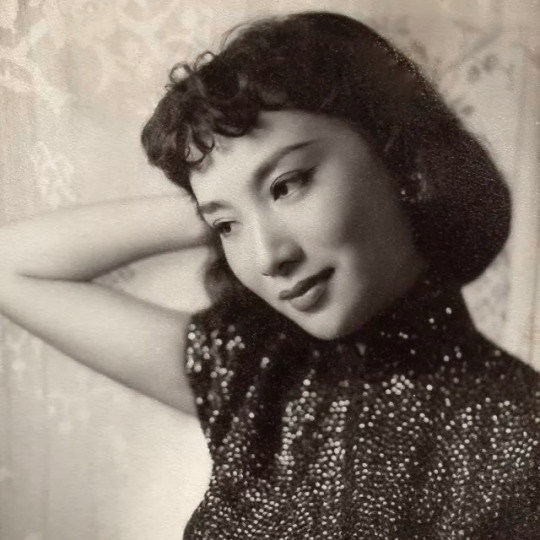
Propaganda
Alla Nazimova (A Doll's House, Camille, Salomé)—She was a proud lesbian, she was a director, she was artsy and experimental, she was instrumental in the rise to fame of Rudolph Valentino, she had the worlds biggest strap on energy
Xia Meng, also known as Hsia Moog or Miranda Yang (Sunrise, Bride Hunter)—For those who are familiar with Hong Kong's early cinema, Xia Meng is THE leading woman of an era, the earliest "silver-screen goddess", "The Great Beauty" and "Audrey Hepburn of the East". Xia Meng starred in 38 films in her 17-year career, and famously had rarely any flops, from her first film at the age of 18 to her last at the age of 35. She was a rare all-round actress in Mandarin-language films, acting, singing, and dancing with an enchanting ease in films of diverse genres, from contemporary drama to period operas. She was regarded as the "crown princess" among the "Three Princesses of the Great Wall", the iconic leading stars of the Great Wall Movie Enterprises, which was Hong Kong's leading left-wing studio in the 1950s-60s. At the time, Hong Kong cinema had only just taken off, but Xia Meng's influence had already spread out to China, Singapore, etc. Overseas Chinese-language magazines and newspapers often featured her on their covers. The famous HK wuxia novelist Jin Yong had such a huge crush on her that he made up a whole fake identity as a nobody-screenwriter to join the Great Wall studio just so he can write scripts for her. He famously said, "No one has really seen how beautiful Xi Shi (one of the renowned Four Beauties of ancient China) is, I think she should be just like Xia Meng to live up to her name." In 1980, she returned to the HK film industry by forming the Bluebird Movie Enterprises. As a producer with a heart for the community, she wanted to make a film on the Vietnam War and the many Vietnam War refugees migrating to Hong Kong. She approached director Ann Hui and produced the debut film Boat People (1982), a globally successful movie and landmark feature for Hong Kong New Wave, which won several awards including the best picture and best director in the second Hong Kong Film Award. Years later, Ann Hui looked back on her collaboration with Xia Meng, "I'm very grateful to her for allowing me to make what is probably the best film I've ever made in my life."
This is round 3 of the tournament. All other polls in this bracket can be found here. Please reblog with further support of your beloved hot sexy vintage woman.
[additional propaganda submitted under the cut.]
Alla Nazimova:


HOT as hell. GAY as hell. TALENTED as hell. Producer, director, writer, actress. A silent era superstar who is credited with having coined the term "sewing circle" as a code-word for gatherings of lesbian and bisexual women. Has been called "the founding mother of Sapphic Hollywood" and was the owner/operator of the Garden of Alla Hotel in West Hollywood, which she bought in 1919 and sold in 1928 after deciding she wanted to go back to Broadway. In addition to starring opposite Valentino in Camille, she also had an affair with BOTH of his wives (Jean Acker and Natacha Rambova). In her day, she was one of the most influential women in the business.
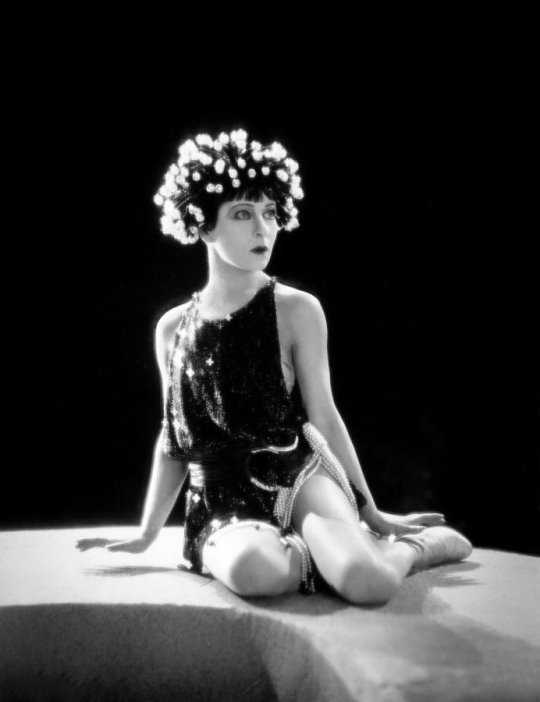
"Nazimova was primarily a star during the silent film era, and her career in film started when she was almost forty. She was openly bisexual, and was engaged in two lavender marriages during her life while she carried on relationships with women (including at least one, and possibly two, of Rudolph Valentino's wives). She was brilliant and an autodidact - when she first moved to the United States from Ukraine, she spoke no English, but taught herself "in about five months" and went on to work as a screenwriter (among other things). Her predilections lay in art film, and she's credited with starring in / producing / directing one of the first American art films, the adaptation of Oscar Wilde's play Salome (1923). She has an elegant and commanding presence in all of her films, and is an absolute sensation to watch in motion."

Gif link, another gif link
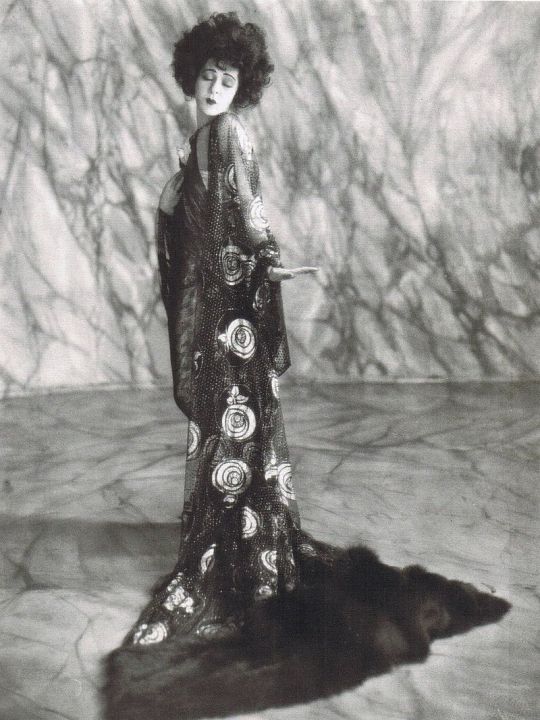
A great actress who also produced a great deal of her films, Nazimova is absolutely mesmerizing to watch. She was also bi and coined the phrase "sewing circle" for sapphic celebrities.
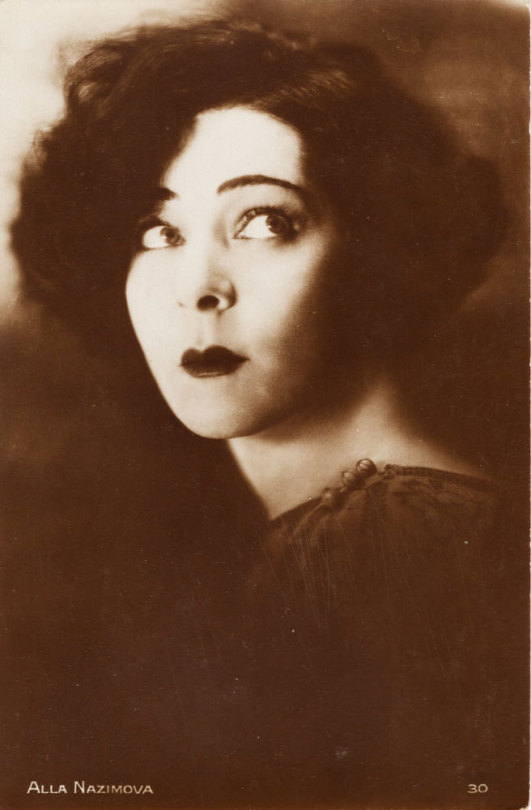


Xia Meng:
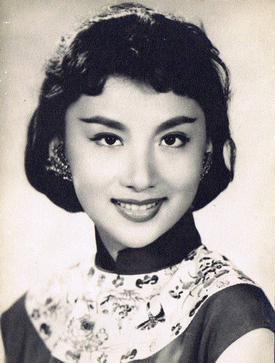
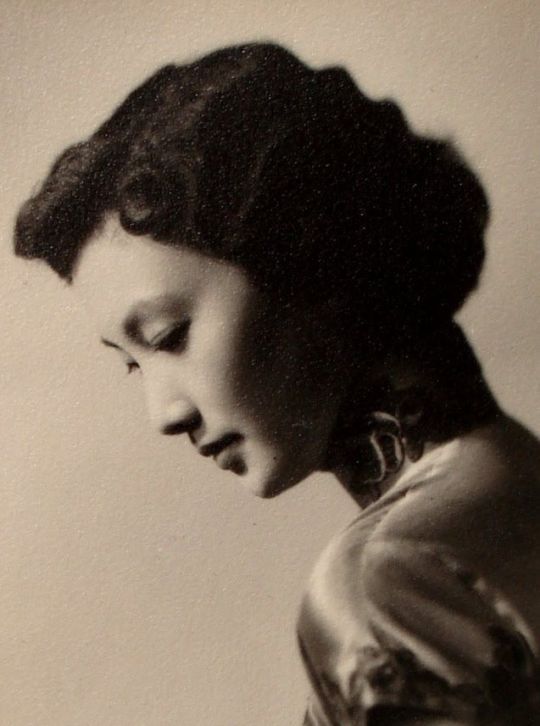
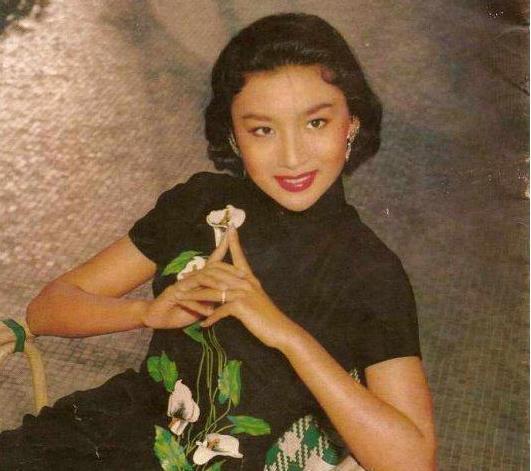
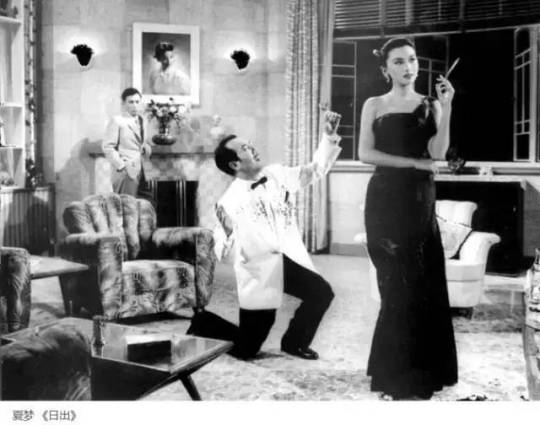

166 notes
·
View notes
Note
Can you recommend some good film podcasts to listen to?
for sure. i can't say that i follow any of these like super religiously, but i'd say all of these are pretty neat and now it's just a matter of which hosts/guests don't annoy you lol. also if anyone else has any more recs, do tell! :) the next picture show is roundtable discussions examining how classic films influence and inspire modern films so you’ll have something like all the president’s men and spotlight comparisons or the wicker man and the vvitch. cool for double feature movie nights.
the big picture has reviews, especially of latest movies, but they also talk about some arthouse stuff. they also do these like top 5 lists, oscars analysis etc. roundtables and interesting guests
the rewatchables both the big picture and the rewatchables are from the ringer website/network so hosts and guests overlap. it’s what it says on the tin. they rewatch movies and then do all these categories, personally my favourite and i think they're very funny.
you must remember this host does incredible research, it’s really about like secret and forgotten histories of 20th century hollywood. they did like a 12 part series on eroticism and sex in 80s cinema, now they moved onto the erotic 90s.
sleepover cinema is super fun and definitely the type of podcast i would want to have, just two friends talking about late 90s/early 2000s movies and pop culture in general that sort of shaped the collective unconscious of “girls and gays” as they say.
intermission from the cinegogue is super chill. they just invite guests and ask them a bunch of movie questions in a way that you would ask a friend, yk like if you could watch movies from only one country which one would you choose, or like favourite nepo baby director. but they also do reviews. blank check cover entire filmographies of directors
black on black cinema for black film reviews and discussions
reel asian podcast for asian and asian american film reviews and discussions
a piece of pie for lgbt films and topics and subtext and such
junkfood cinema for shitty and cult movies. also how did this get made is about bad movies we love.
space brains for science fiction
final girls horrorcast for horror, sci-fi, thrillers both well known and obscure
filmspotting and the film cast for reviews of new and old as well
sardonicast does pretty much everything
66 notes
·
View notes
Text
Guys, you don't know what just happened to me!! I love soundtracks so I stopped to listen to The Bear's, i found the official FX playlist on Spotify and was listening to it when suddenly a podcast starts and I was like???? So i looked and it was about a horror film??? I, tring to understanding, went to the FX site to see the playlist and the episodes and saw that it was the song from the beginning of the ep5- Children (the lullaby) with our beloved Natalie💖...So what happened was that the music is from a horror film and instead of putting the soundtrack they put on this podcast!!! And I don't know if it was on purpose or just a mistake!!! (And all this reminded me of the people here who started a tag, I don't know who, about The Bear being a haunted/ghost story💀)
It's this scene, with this song:
And the Playlist has this podcast:
But i was like Nat why you have a horror movie song playing in your head??? And cause I'm curious, I went to find out more about the film, cause I didn't know the movie (horror isn't really my thing) and I discovered that:
The Night of the Hunter is a 1955 American film noir thriller directed by Charles Laughton. Despite receiving negative reviews upon its original release, it has been positively re-evaluated in later decades and is now considered one of the greatest films ever made. “The movie is best known for Robert Mitchum's extraordinary performance as serial-killer-posing-as-priest Harry Powell, a menacing religious misogynist who marries widows for their money and kills them off in the name of the Lord. Having been jailed for stealing a car, he shares a cell with father-of-two Ben Harper, soon to be hanged for murder and the theft of $10,000. Before his arrest Harper hides the money in a rag doll belonging to his little daughter Pearl, making her and his 10-year-old son John swear never to tell where the money is hidden. The plot hinges on Powell's pursuit of the money and John's determination to protect his sister and escape from a psychopath whom others assume is virtuous. Hiding his past, Powell woos, then marries Harper's widow Willa (Shelley Winters). When she discovers his motives he murders her, and the children escape on a boat down the river. A tense chase ensues. The film exists in that cinematic no-man's-land of fairy tales for adults, is a children's fairytale – strange and idiosyncratic – but also a noir thriller, laced with the darkest elements of both genres: death, guilt, greed, poverty, cruelty, biblical references and a terrifying pursuit by the scariest of bogeymen. Laughton described it as "a nightmarish sort of Mother Goose tale". John, played superbly by the steely eyed Billy Chapin, is pivotal as the boy who is alone in perceiving Powell's true motives. In a tale of innocence and experience, he must quickly grow up in the most sinister of circumstances; he must resist adult hypocrisy and stupidity, and a new "father" who pretends to be loving, but is secretly abusive. Gripping in its narrative, the film is also frequently and darkly humorous.”
“Thinking of The Night of the Hunter in terms of its visual impact on other filmmakers, there’s a striking echo to be observed between its unseen presence in films by Scorsese, Spielberg, the Coens, even Ari Aster, and the influence of silent cinema on Laughton’s own filmmaking choices.”
“We can notice the importance of one particular scene: the escape of the children in a boat (they are running away from the killer). This scene, being so important, is also one of the most memorable of the entire film. The components that make it so memorable are: setting, lighting, framing, blocking and music. In the river sequence, the usual realistic environment of the film disappears, giving place to such an artificial setting that it seems that we are watching a whole new film.[...] Again, we feel that the children are safe again in the boat, as they run away from their hunter.
“The river symbolise safety – it is what separates (even temporarily) John and Pearl from Powell. In a way, it is a metaphor for the transformation of a past full of terror into a brighter future¹ with Rachel.”
About the music: “Composer Walter Schumann called the heavy four brass chords that often accompany Preacher a “‘pagan motif, consisting of clashing fifths in the lower register,’” which cede to the lullaby “Dream, Little One, Dream” with a shot of Gish. This celestial lullaby foreshadows her adoption of the children after they escape downriver. In the opening and river sequences especially, audio-visions juxtapose fantasy and reality, and good and evil, to propel the children to safety.[...] In these sequences, Laughton’s visual constructions and Schumann’s score establish abstract contours that take root in spectatorial memory. When the overture transitions from Preacher’s pagan motif to a tranquil lullaby, celestial sounds and Gish’s presence seem to safeguard the children from Preacher’s tyranny.[...] Schumann’s pagan motif, Miz Cooper’s lullaby, and the sounds of the children’s river journey mix realistic tropes and emotional flourishes in the manner of 1950s melodrama films, which especially employed music to articulate these opposing poles. For Peter Brooks, music punctuates the wordless gestures of the melodramatic “text of muteness”: its sweeping rhythmic motions render space and time tangible to imbue characters—especially muted victims—with emotional depth².[...] Analyzed through a motivic model that binds characters to themes, Hunter’s river lullabies foreshadow the children’s eventual safety with Miz Cooper even though maternal figures are not visible.”
So there is this important and well-known scene in the film when the song plays. When the kids are finaly safe in a boat on the river (the part of the song they use in the series starts at around 3:55):
youtube
So basically: there's a father who hid some money in the kid's toy (which reminded me of the money in the cans of tomatoes- KBL); an orphaned brother and sister; children looking for shelter; during the escape they are they feel safe in a boat on a river (when the lullaby plays) and in the end they are adopted and everything is fine.
I wanted to understand what this means for Nat, what it has to do with her. When the scene starts the song says "fear is just a dream…" then she thinks about her fears: her brother, mother and a mom's funeral (Marcus), then the song continues "so dream, little one, dream", like, it's not real, no need to fear it!
So…this is ep5 called Children, where: 1-Syd and Marcus take his mother's stuff out of the house and talk about their family 2-we find out that Ever is going to close (a funeral will happen) 3-Marcus and Nat talk about his mother and to start a new project to honor her while Nat is resting from pregnancy discomfort 4- it's the ep The Computer appears and Nat defends Marcus 5- there are the Faks, including John Cena, talking about their family and the hauntings 6- Syd and Uncle Jimmy talk and he says he wishes he had done more for the kids (she reminds him that he is there for them) and finally 7- Carmy goes to the basement and finds a box with photos of the family (Donna and Mike and himself too and a baby that could be Nat?!!!) then some riffs of the song Mixed Emotions by Rolling Stones start and it cuts to the credits with the lyrics right in the part: You're not the only one, You're not the only ship, Adrift on this ocean. And that's it! Just these lyrics and then just instrumentals. They cut the song to fit the scene and without any other part of the lyrics!!!


Carmy my man, Nat needs you! And she was the one who reminded him in the first season: "did you know i recently had a brother die too?" She's trying. She wants help, she already told him, "the thing that pisses me of is that you never ask her how i am doing!!!" but he can't ask her that "because he feels trapped, because he can't describe how he feels, so asking someone else how they're feeling seems crazy to him" (like, he literally told her that in S1). They need to talk, they need each other, they need family (a new one probably...the restaurant...uncle Jimmy too?? She talked with him about be a parent last season and he is always there for them, saving them). Nat managed to talk to her mother, even asked for help (it’s not a solution for everything, but it was a start)...but Carmy...there's still a long way to go, a next season thing. But I think it may be a thing they need to do together somehow, i dont know...
Nat is afraid of her past, motherhood and knows family is complicated, she is looking for a brighter future¹. She and Carmy (and Mike) are children of a abusive/alcoholic parent and live with the consequences of that (some people here have already talked better about the subject). So they are like the kids from the movie, who are muted victims—with emotional depth², in a complicated family, going throught the river until they reach a safer place with better people.
And also, last seasons they showed the "pyromaniac tendencies" of the Berzatto brothers, there were these references to setting the restaurant on fire as if that was the solution to their problems...and now in season 3 I thought that had been forgotten...instead, the ep1 already starts with (first a train, and then) a lake, which appears other times throughout the season... Copenhagen Carmy living in a boat on a river!!!, and all happy and safe, drawing on a bridge over a river!!!
We also had a scene with water being thrown on the kitchen countertop and "flooding" the space (with a song by Trent Reznor and Atticus for a war doc! that the director describes as profound, haunting, unsettling and deeply moving!!!) in a moment that the crew is cleaning the kitchen and everyone is tired and overwhelmed; there is Donna talking about the fish tank that breaks in a dream that takes place in a place she doesn't know that looks gray except for the tank (surreal, like a noir thriller maybe). These don't seem so safe, but they seem to be about the past, something to be overcome... And there's even a scene of Syd reflecting in front of a lake... Several water references...and I have no idea if that really means anything...or if i am going to deeper into this?😅
...but Nat, dear, are you okay?!...you feel like in a horror movie with your remaining brother seeking safety together somewhere or with someone, running away from a curse, a haunting in your family??? (in S1 Carmy talks about how she blames the restaurant, not her mother or Mike, she says the place sucks up all the work, money and time and all they get back is chaos and resentment) But seriously, someone help her!!!...and Carmy...She must have felt very lonely this season with Carmy like that...But I guess this all means that everything will be fine in the end, like in the movie!
Seriously, I couldn't come to a better conclusion about this but it left me curious and confused... And of course, it might mean nothing and just be an interesting song from an amazing movie that director Chris Storer likes because he likes great movies and that's all 🙃 But with all the movie references, great directors and hauntings...maybe I'm not so crazy😅 <<<I tell myself to feel better🫠
#natalie berzatto#my beloved🥰💞#it could be just a song and this was unnecessary#if you guys think of something better let me know please#im dying to know if this means so#the bear#this show makes me insane obviously as you can see#berzatto siblings#carmy berzatto#marcus brooks#syd adamu#the bear is a ghost story#the bear is hauted house#The Night of the Hunter
66 notes
·
View notes
Text
Kendrick Lamar’s "Squabble Up": A Visual Masterpiece of Cultural References and Homage
Kendrick Lamar has once again cemented his place as a visionary artist with the release of his "Squabble Up" music video. Packed with cultural nods, historical tributes, and impactful cameos, the video is a layered exploration of Black culture, West Coast pride, and hip-hop legacy. Here’s a deep dive into the elements that make this visual a masterpiece.
1. Ice-T's Power Album Cover
Kendrick pays homage to Ice-T’s 1988 album Power, one of the foundational pieces of West Coast rap history. By referencing this album, Kendrick honors a pioneer who paved the way for artists to merge raw storytelling with mainstream appeal.
2. David Hammons’ “African-American Flag”
The reinterpretation of the U.S. flag by David Hammons, featuring red, black, and green colors, symbolizes Black identity and resilience. Kendrick’s inclusion of this flag is a nod to empowerment, heritage, and the ongoing fight for equality.
3. Soul Train Scramble Boards
Kendrick incorporates the scramble boards made famous by Soul Train, the iconic Black dance and music show. This nostalgic reference celebrates Black excellence and the cultural impact of the show, which gave countless artists a platform.
4. Trunk Boiz “Scraper Bike” Video
The video nods to the 2007 “Scraper Bike” video by Trunk Boiz, a Bay Area anthem celebrating creativity and individuality. This homage reflects regional pride and highlights how grassroots movements have shaped urban culture.
5. Menace II Society Reference
The tricycle scene is a direct reference to the 1993 urban classic Menace II Society. This moment reminds viewers of the gritty realities of inner-city life and ties Kendrick’s storytelling to a legacy of authentic cinema.
6. Isaac Hayes’ Black Moses Album Cover
Kendrick recreates the cover of Isaac Hayes’ 1971 album Black Moses. This nod pays tribute to a soul music legend whose work represented strength, vulnerability, and empowerment.
7. The Roots’ "The Next Movement" Video
Visual parallels to The Roots’ 1999 “The Next Movement” video highlight Kendrick’s connection to progressive hip-hop storytelling, showing his appreciation for fellow innovators.
8. Nate Dogg Tribute
Kendrick subtly honors West Coast legend Nate Dogg, whose smooth hooks defined an era of hip-hop. This tribute ties the video to the golden age of West Coast rap and acknowledges Nate Dogg’s lasting influence on the culture.
9. “Jesus Saves Gangsters Too” Outreach Ministry
This reference to the grassroots ministry founded in 2000 emphasizes themes of redemption and transformation. By including this, Kendrick underscores his message that no one is beyond saving.
10. Statue of a Black Panther
A striking statue of a Black Panther symbolizes resistance, unity, and empowerment. This imagery connects Kendrick’s work to the legacy of the Black Panther Party and its role in advocating for justice.
11. Ese’s Partying Scene
Kendrick includes a scene of Ese’s partying, highlighting the intersection of Black and Chicano cultures in L.A. This moment is a celebration of diversity and community, integral to the West Coast lifestyle.
12. Big and Curvy Women Dancing
The inclusion of big and curvy women dancing challenges societal beauty standards and celebrates body positivity. Kendrick has long been an advocate for authenticity, and this scene is a bold statement of inclusivity and empowerment.
13. Dog Trainer Bitten by a Pitbull
The scene of a pitbull biting its handler carries layered symbolism. It could represent the struggle between control and rebellion or speak to the unpredictability and survival instincts that define life in the streets.
14. Westside Traffic’s Hoover Stomp
Schoolboy Q’s artist Westside Traffic performs the Hoover Stomp, bringing raw, authentic energy to the video. This moment is a vibrant nod to L.A. street culture and its unique contributions to hip-hop.
15. Storm DeBarge’s Stunning Moves
Choreographer and dancer Storm DeBarge brings dynamic energy to the video with her captivating performance, further showcasing Kendrick’s commitment to highlighting Black artistry.
16. Black Panther Movie Connection
Kendrick subtly nods to his work on the Black Panther movie soundtrack. This acknowledgment reinforces his role as a cultural leader bridging the worlds of art, music, and activism.
17. Cameos from L.A. Stars
The video features appearances by Taz Arnold, G Perico, RJMrLA, and Cuzzos, bringing together a community of creatives who embody the vibrant spirit of L.A.’s music scene.
A Celebration of Culture and Legacy
From its rich cultural references to powerful imagery and standout cameos, Kendrick Lamar’s "Squabble Up" is a layered visual masterpiece. It’s not just a music video—it’s a celebration of resilience, identity, and the enduring legacy of hip-hop.
youtube
Have you been spending all your money and time on making music and shooting videos, but still not getting any exposure? Tired of just spinning your wheels? You know to get exposure you need to get featured on blogs, radio stations, playlist, and get your music e-mail blasted out to the masses. Need help getting all that done? Then check out the Package we’ve made available for you below!
Like & Listen To Our Spotify Playlist
trapLAXradio On The Air Now!
The Latest Music, Videos, News, Entertainment……
#trapLA#Kendrick Lamar#Squabble Up#West Coast Rap#Nate Dogg#Cultural References#Hip-Hop Culture#LARapRadar#Black Art#Body Positivity#Soul Train#Westside Traffic#David Hammons#Ice-T Power Album#Isaac Hayes Black Moses#Menace II Society#Scraper Bike Video#Storm DeBarge#Black Panther Statue#Jesus Saves Gangsters Too#Ese Party Scene#Dog Trainer Pitbull Scene.
40 notes
·
View notes
Text


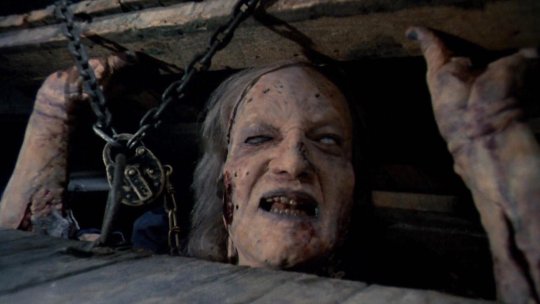
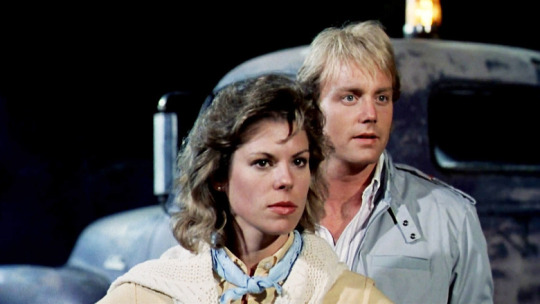
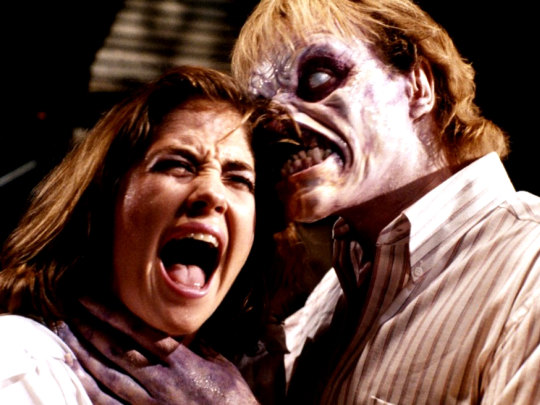

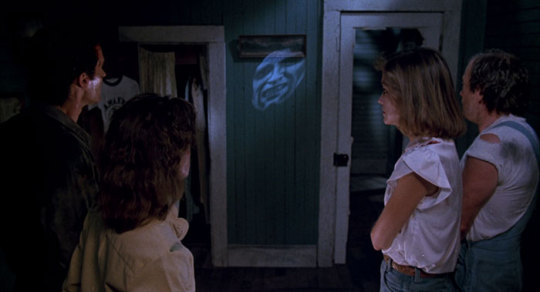

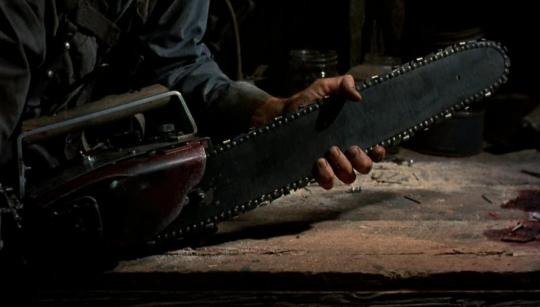

Evil Dead II (Evil Dead 2: Dead by Dawn, 1987)
"Honey... you're holding my hand too tight."
"Baby, I ain't holding your hand."
#evil dead ii#horror imagery#gore tw#blood tw#evil deadology#sam raimi#1987#american cinema#horror film#scott spiegel#bruce campbell#sarah berry#dan hicks#kassie wesley depaiva#denise bixler#richard domeier#ted raimi#john peakes#lou hancock#snowy winters#joseph loduca#like the first film‚ i (smug‚ foolish) felt sure i knew exactly what i was getting into with this one; like the first film‚ i was genuinely#unprepared for quite how good this is. now working with a (slightly) bigger budget‚ Raimi breezes through a quick retooling of the first#film and then expands the story‚ bringing in more characters and more lore. he also starts to twist the vibe: where 1 was a pretty dread#filled existential horror‚ this sequel is heavily informed by the influence of Looney Tunes cartoons‚ the Three Stooges‚ anything and#everything Raimi and his core group loved. the result is a ceazy genre defying mashup‚ a weirdo splatstick masterpiece that crucially still#foregrounds Raimi's highly original vision and gift for doing the unexpected (the laughing scene is simultaneously absolutely ridiculous#and one of the most unsettling moments in 80s horror). Campbell's Ash appears to have developed too‚ entering the film a much more mature#more self assured presence than the Ash of ED1; he promptly gets his ass handed to him by ghost wind and spends the next half hour losing#his mind (and hand). a delightful‚ playful‚ darkly subversive take on the big studio horror sequel and honestly just a brilliant film
8 notes
·
View notes
Text
David Lynch dying today........ perhaps art died today too
David Lynch's work as a director has influenced me in more ways that I can count. For all of you, the characters of Yoongi, Taehyung and Namjoon in Trouvaille have been directly inspired by the show Twin Peaks. "The Black Lodge" jaguar Yoongi once worked in was taken from the show. The music is what bear Taehyung listened to, wolf Namjoon is a love letter to Agent Dale Cooper. The three Trouvaille boys that Twin Peaks inspired came from other beloved characters of mine from the show: Audrey Horne, Josie Packard, Bobby Briggs, Big Ed, Laura Palmer and Sheriff Harry Truman. Yoongi's backstory comes largely from Laura Palmer's story in the film Fire Walk With Me.
It is an understatement to say that I'm devastated by the news of David Lynch's death. If you have yet to interact with his work, now is the time-- it will stick with you forever.
David Lynch both understood women deeply and loved them. The stories he wrote for his female characters are unlike anything else in cinema. He's always inspired me to get a little weird with it, to indulge in simple vices (in his case, a love for cigarettes), find beauty in simple things, and cherish a sort of American charm that feels nostalgic. I will never forget him 💗




31 notes
·
View notes
Note
hey!! i am genuinely curious about how the catholic church helped implement the hays code, would you be able to tell me more/do you have any good reading material about it? thanks so much!!
This has been sitting in my inbox for aaaaaages, because I want to do it justice! It's actually a big facet of my research project that I'm going to go into much, much, much more depth on, but here's the short(er) summary:
The foundational text of the Hays Code was written by two Catholics: a Jesuit priest named Father Daniel Lord, and a man named Martin Quigley, who was the editor of the Motion Picture Herald. They grounded their guidelines in Catholic morality and values, based on the idea that art could be a vehicle for evil by negatively influencing the actions of those who view it.
The original list of guidelines written by Lord and Quigley was adapted into the Production Code, popularly known as the "Hays Code" after William Hays, the president of the Production Code Administration that enforced it. As president of the PCA, William Hays appointed a staunch Catholic man called Joseph Breen to enforce the code. Breen enforced it aggressively, confiscating the original reels of films he deemed inappropriate and against the Code. Many lost films from this era are only "lost" because Joseph Breen personally had them destroyed. Some were rediscovered later, but many were completely purged from existence.
When Breen died in 1965, Variety magazine wrote, "More than any single individual, he shaped the moral stature of the American moral picture." He was a very, very big deal, and was directly responsible for censoring more films than I could even begin to list here.
In 1937, Olga J. Martin, Joseph Breen’s secretary, said, “To an impoverished country which had become religious and serious-minded, the sex attitudes of the post-war period became grotesquely unreal and antedated. The public at large wanted to forget its own derelictions of the ‘gay twenties.' The stage was set for the moral crusade.”
In 1936, once the Code was being fully enforced on filmmakers by Joseph Breen, a letter was issued by the office of Pope Pius XI that praised Breen's work, and encouraged all good Catholics to support film censorship.
The letter read in part, "From time to time, the Bishops will do well to recall to the motion picture industry that, amid the cares of their pastoral ministry, they are under obligation to interest themselves in every form of decent and healthy recreation because they are responsible before God for the moral welfare of their people even during their time of leisure. Their sacred calling constrains them to proclaim clearly and openly that unhealthy and impure entertainment destroys the moral fibre of a nation. They will likewise remind the motion picture industry that the demands which they make regard not only the Catholics but all who patronize the cinema."
Basically, this letter was a reminder from the Papal authority that bishops and priests are supposed to stop people from engaging with "lewd" or "obscene" art. That meant supporting things like the Hays Code.
So, to summarize: the original text of the Hays Code was written by two Catholics, including a priest. The biggest and most aggressive censor under the Code was a Catholic man, who had the full support and approval of the Pope at the time. Good Catholics were called en-masse to support the Hays Code, because it was intentionally written to line up with Catholic teachings.
There's a lot more to say on the subject, and if you're interested in reading more on your own, I recommend the book "Pre-Code Hollywood: Sex, Immorality, and Insurrection in American Cinema, 1930-1934," by Thomas Doherty. There are plenty other sources I can recommend on request, but that's a solid place to start.
(And if I can toot my own horn, I'm intending to do a video lecture series all about American film censorship and the Hays Code. Pledging to my Patreon helps keep me fed and housed while I do all this damn research.)
1K notes
·
View notes